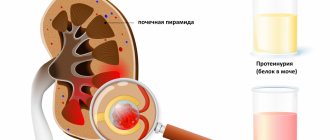Back to list Previous article Next article
18.06.2012
Tags:
Klebsiella, microflora
( 8 ratings, average: 5.00 out of 5)
In the summer, diseases caused by infectious agents become relevant.
Microorganisms of the enterobacteria family are especially active - gram-negative, rod-shaped, with flagella for movement and attachment, facultative anaerobes: Escherichia coli, salmonella, klebsiella, etc. Thus, Klebsiella - klebsiella , can exist in soil, water, remaining viable for months, persists on food and dust.
Klebsiella can enter the body through the gastrointestinal tract, from poorly washed hands, vegetables and fruits, from water, from soil. However, this microorganism belongs to the group of opportunistic microflora and is detected in absolutely healthy children and adults; it is considered one of the elements of normal intestinal flora .
At the same time, Klebsiella is one of the most common nosocomial infections , because it is resistant to environmental factors and high temperatures. Although, in a few minutes it dies from disinfectants, and at very high temperatures in 1-1.5 hours. If proper hygiene rules and sanitary standards in the premises are not observed, there are cases of infection of newborns with Klebsiella in maternity hospitals. The baby constantly cries and cannot fall asleep, he is bothered by colic and frequent diarrhea. And the reason is Klebsiella - a bacterium resistant to the harmful effects of the external environment, covered with a dense capsule.
Factors in the development of klebsiellosis
Klebsiella belongs to the same family with bacteria of the genus Serratia and Enterobacter. These pathogens, especially Serratia, which is the most drug-resistant, cause outbreaks of infection in hospitals due to the contamination of a number of medications and medicinal solutions used in respiratory therapy. They are difficult, but can be differentiated only with the help of special tests. Klebsiella Enterobacter and Serratia, which cause nosocomial pneumonia, urinary tract infection, and bacteremia, have different susceptibility to antimicrobial drugs.
Positive coloring. K. pneumoniae cell. Uv. x6000
If the human body’s defenses are weakened for some reason: general immunity is reduced, often influenza, ARVI, the use of antibiotics, consumption of contaminated, low-quality products, diabetes mellitus, alcoholism, etc., Klebsiella begins to actively multiply, secrete toxins, causing endotoxemia and inflammatory processes in different organs. Diseases such as pneumonia, inflammatory diseases of the urinary tract, meningitis, conjunctivitis, intestinal infections, sepsis and quite rare diseases - ozena (fetid runny nose), rhinoscleroma develop.
Most often, Klebsiella causes pneumonia and intestinal damage. In adults, pneumonia caused by Friedlander's bacillus is more common. Due to the peculiarity of the immunity of newborns and the insufficiency of their normal microflora on the skin, in the respiratory tract and especially in the intestines - Klebsiella - Klebsiella oxytoca - more often causes damage to the gastrointestinal tract - the large intestine.
Klebsiella pneumoniae (Klebsiella pneumoniae)
Klebsiella pneumonia
(lat.
Klebsiella pneumoniae
) is a type of gram-negative facultative anaerobic opportunistic bacteria.
It is part of the normal microflora of the human intestine, skin, and oral cavity. It looks like a small round rod measuring 0.5–0.8 by 1–2 microns. Klebsiella pneumoniae
does not form spores, is immotile, and is capable of forming capsules. They are located singly, in pairs and in clusters.
Klebsiella pneumoniae in the human gastrointestinal tract
Klebsiella pneumoniae
colonizes the intestines of modern humans in the first 5–6 days of life, and the main source of
Klebsiella pneumoniae
is the mother and staff of maternity hospitals.
Detection of Klebsiella pneumoniae
in the gastrointestinal tract (GIT) of a person, in general, does not require treatment.
In a healthy person, there are up to 105 Klebsiella pneumoniae
.
At the same time, if the functioning of the gastrointestinal tract organs is disrupted or as a result of external influences, a significant increase in the number of Klebsiella pneumoniae
in the body and the development of infection are possible. In particular, when prescribing antibiotics, their effect on the microbial flora populating the intestines is not always taken into account. Antibacterial drugs suppress the growth of not only pathogenic microorganisms, but also normal microflora. As a result, saprophytic microbes (Klebsiella, staphylococci, Proteus, yeasts, enterococci, Pseudomonas aeruginosa, etc.) multiply and acquire pathogenic properties (P.L. Shcherbakov).
The cause of klebsiellosis of the gastrointestinal tract can be dysbacteriosis or infection from patients with an infectious form of klebsiellosis. The disease manifests itself in the form of acute gastritis, gastroduodenitis, intestinal infection and is characterized by an acute onset, nausea, vomiting, abdominal pain, diarrhea, fever and general weakness. The duration of klebsiellosis of the gastrointestinal tract is 1–5 days.
Klebsiella pneumoniae is a cause of nosocomial infections
Klebsiella pneumoniae
is one of the causes of nosocomial infections.
In recent years, in different countries (including Russia and Israel), there have been cases of mass infection of
hospital patients Klebsiella pneumoniae Patients most often infected were those with weakened immune systems, those who had undergone organ transplants, or those undergoing chemotherapy.
Klebsiella pneumoniae and urinary tract and genital infections
Klebsiella pneumoniae
is one of the common causative agents of urinary tract infections.
Unlike the gastrointestinal tract or skin, Klebsiella pneumoniae
is always a pathogenic microorganism for the urinary tract.
Among patients seeking outpatient care with uncomplicated urinary tract infections, the cause of infection in 6.4% of cases is Klebsiella pneumoniae.
For patients with complicated urinary tract infections, this figure reaches 9.4%.
Klebsiella pneumoniae
in the genitourinary tract is often a consequence of nosocomial infections.
Klebsiella pneumoniae can occur in the vaginal microflora, in particular, after taking antibiotics, which resulted in the destruction of the normal vaginal microflora. Klebsiella pneumonia in the genitourinary tract is often a consequence of nosocomial infections.
Klebsiella rhinoscleroma
Klebsiella rhinoscleroma
(
Klebsiella pneumoniae subsp. rhinoscleromatis
), also called
rhinoscleroma bacillus
or
Frisch-Wolkovich bacillus
, is the causative agent of a chronic infectious disease - scleroma, granulomatous lesions of the nasal mucosa (rhinoscleroma) and the upper respiratory tract. Klebsiella rhinoscleroma causes chronic inflammatory processes in the mucous membranes of the upper respiratory tract and bronchi with the formation of infiltrates, which then scar. Klebsiella rhinoscleromas are found in granulomas, where they are localized inside and outside cells.
Klebsiella ozena
Klebsiella ozena
(
Klebsiella pneumoniae subsp. ozaenae
), called in the past
the ozena bacillus
or
the Abel-Levenberg bacillus
, is detected in 80% of patients with ozena - a fetid runny nose, characterized by an atrophic process of the mucous membrane and bone walls of the nasal cavity, accompanied by the formation of a secretion that dries into fetid crusts , covering the mucous membrane in a dense layer. Klebsiella ozena causes chronic diseases of the respiratory system, affecting the pharynx, larynx, and trachea. The disease is accompanied by the release of a foul-smelling, viscous secretion.
Treatment of klebsiella
Antibiotics are usually used to treat Klebsiella infections. Also used are medications whose active ingredients are bacteriophages ( Klebsiella pneumoniae bacteriophage purified liquid
, Sextaphage, etc.). Bacteriophages act selectively and have no contraindications, but they are less effective than antibiotics.
An effective probiotic is Enterol, which contains lyophilized yeast fungi Saccharomyces boulardi
, which have a direct antimicrobial effect against
Klebsiella pneumoniae.
Antibacterial agents active against Klebsiella pneumoniae
(from those described in this reference book): levofloxacin, norfloxacin, oflaxacin, as well as gentamicin, naftifine and others.
Klebsiella pneumoniae
resistant to clotrimazole.
Klebsiella pneumoniae in the taxonomy of bacteria
The species Klebsiella pneumoniae
is included in the genus Klebsiella (lat.
Klebsiella)
, family Enterobacteriaceae (lat.
Enterobacteriaceae
), order enterobacteria (lat.
Enterobacteriales
), class gamma-proteobacteria (lat.
γ proteobacteria
), phylum proteobacteria (lat.
Proteobacteria
), kingdom bacterium .
Obsolete name Klebsiella pneumoniae
-
Friedlander's wand
.
Carl Friedländer (German: Carl Friedländer, 1847–1887) was a German microbiologist who isolated a pure culture of Klebsiella pneumoniae
in 1882.
Originally Klebsiella pneumoniae
has been identified as a microorganism that causes pneumonia (hence its name).
However, its role is not limited to infections of the respiratory system. In general, Klebsiella pneumoniae
is classified as an opportunistic microbe, which in normal situations and in certain organs is in a symbiotic relationship with the human body, and in other situations is the cause of infectious diseases.
According to the results of the latest revision of the taxonomy of Klebsiella to the species Klebsiella pneumoniae
Two previously separate species are classified as subspecies:
- Klebsiella pneumoniae subsp.
ozaenae (formerly a separate species
Klebsiella ozaenae
) and - Klebsiella pneumoniae subsp.
rhinoscleromatis (formerly
Klebsiella ozaenae
),
and also the subspecies Klebsiella pneumoniae subsp. pneumoniae
Klebsiella pneumoniae in ICD-10
Klebsiella pneumoniae
is mentioned:
- in “Class I. Certain infectious and parasitic diseases (A00-B99)” of the International Classification of Diseases ICD-10, it is included in the block “B95-B98 Bacterial, viral and other infectious agents” and has a heading code “B96.1 Klebsiella pneumoniae
[
K. pneumoniae
] as a cause of diseases classified elsewhere.” This code is intended to be used as an additional code when it is advisable to identify infectious agents of diseases classified in other headings - in "Class X. Respiratory diseases (J00-J99)", block "J10-J18 Influenza and pneumonia", in the heading "J15.3 Pneumonia caused by Klebsiella pneumoniae
"
On the website GastroScan.ru in the “Literature” section there is a subsection “Microflora, microbiocenosis, dysbiosis (dysbacteriosis)”, containing articles for healthcare professionals addressing the problems of microbiocenosis and dysbiosis of the human gastrointestinal tract.
Patient Materials
The GastroScan.ru website contains materials for patients on various aspects of gastroenterology:
- “Advice from doctors” in the “Patients” section of the site
- “Popular gastroenterology” in the “Literature” section
- “Popular gastroenterology” in the “Video” section
Back to section
Symptoms of Klebsiella (klebsiellosis) in the gastrointestinal tract in infants
The symptoms of Klebsiella in babies are similar to the symptoms of dysbiosis: bloating, flatulence, colic, regurgitation. But more often they manifest themselves as loose stools with mucus, blood and a pungent odor, fever, abdominal pain and severe dehydration. Depending on the type of immunity the baby has, the course of the disease can be either mild or fraught with severe infectious complications. If Klebsiella multiplies quickly in the body, releases toxins, intoxication and dehydration increase, then the disease can manifest itself within a few hours and will require urgent hospitalization of the child.
Therefore, in case of any stool disorder, it is necessary to consult a doctor, have the child’s stool tested, and undergo an examination to accurately identify which bacteria caused the change in the child’s condition . Breastfeeding plays a major role in restoring immunity and normal microflora in a newborn. If there is a high prevalence of Klebsiella and a severe form of the disease, the child is treated in a hospital, complex therapy with antibiotics is prescribed. If the infant’s disease is mild, then probiotics are prescribed to correct the intestinal microflora. Synbiotics – Normoflorins L and B – have active anti-inflammatory, antiseptic and nutritional effects, which is important for Klebsiella infection. The child may feel normal, but during examination they find an increase in the number of Klebsiella in the tests. Then drugs with lacto- and bifidobacteria are prescribed to displace excessive amounts of Klebsiella, increase immunity, and improve one’s own beneficial microflora.
Symptoms of staphylococcus in infants
Staphylococcus infection manifests itself quite quickly. Staphylococcus aureus is an extremely aggressive and virulent pathogenic microorganism that detects its presence almost immediately after infection. The normal level of Staphylococcus aureus in the body is zero. If the infection occurred in a maternity hospital, then by 2-5 days the baby begins to have problems with the gastrointestinal tract.
The main symptom is frequent bowel movements. However, even in a healthy baby fed with breast milk, bowel movements can be regular and quite frequent.
In this case, the disease can be identified based on additional symptoms:
- Skin rashes (pustules, boils, etc.);
- Long-term non-healing navel;
- Gushing regurgitation;
- The appearance of green, pus, blood in the stool;
- Changes in the color and structure of stool: yellow or greenish stool, foamy.
Children older than one month suffer from staphylococcal infections somewhat less frequently, and their symptoms differ. In such children, the disease occurs as gastroenterocolitis or toxic infection.
Toxic-infectious type damage
Staphylococcus often forms colonies on the surface of food. During its life, the microorganism actively produces enterotoxins. After eating contaminated foods, both the bacteria themselves and the toxins they produce enter the child’s body.
Symptoms include:
- Signs of general intoxication of the body (increase in body temperature to 37.5-39.0, headache, weakness and lethargy, drowsiness, nausea);
- Paleness of the skin;
- Frequent vomiting and diarrhea.
Most often, a child’s body is attacked by bacteria when consuming the following products:
- Fermented milk products: milk, cottage cheese, kefir, etc.;
- Fruit and vegetable juices;
- Baby food from jars.
Parents who constantly feed their children store-bought food are especially at risk. As you know, such products are often transported and stored incorrectly.
Any doctor from a children's infectious diseases hospital can talk about many patients under two years of age who were fed expired Agusha, Frutonyanya or Rastishka and ended up in the hospital with severe poisoning.
Children infected with staphylococcus suffer from the disease much more severely than adults:
- A high degree of intoxication leads to the fact that the child practically refuses to eat;
- Frequent diarrhea and vomiting lead to dehydration and removal of electrolyte salts from the body. As a result, metabolism is significantly disrupted;
- If a child experiences frequent manifestations of toxic infection, and they are severe (pallor after vomiting, problems with sleep and awakening), you should immediately transport the child to the hospital on your own or by calling an ambulance.
Gastroenterocolitis-type lesion
The acidity of a child's stomach does not have the same degree as that observed in an adult. During its life, staphylococcus produces a lot of enzymes and toxins that destroy the cellular structures of the mucous membranes. As a result, damage occurs to the mucous membrane of the stomach, small and large intestines. The so-called gastroenterocolitis develops.
The disease includes two components:
- Gastritis. In children, the disease is expressed in refusal to eat and frequent vomiting. It is not so easy to distinguish vomiting from natural regurgitation without special knowledge. To draw the right conclusion, you need to keep in mind that experts consider vomiting in an infant to be a volume of vomit that exceeds three tablespoons. Regurgitation more than three times a day is also considered pathological.
- Gastritis in children is accompanied by symptoms of intoxication, as well as respiratory disorders (breathing is hoarse or noisier);
- The child's voice becomes hoarse;
- The sucking reflex weakens;
- Dry lips are observed. The eyeballs visually sink deeper;
- The peritoneal wall loses its tone. As a result of a functional test (pinching the skin), the fold straightens out slowly. This indicates dehydration of the body.
- Enterocolitis. It is a lesion of the mucous membrane of the large and small intestines. For diagnostic purposes, a stool test is performed. Normally, staphylococcus should not be detected in feces, but a small amount is considered normal, since even children's immunity can suppress the infection. To make a diagnosis of infectious enterocolitis, the level of staphylococci in the feces must be 10 to the power of 2 colony-forming units per gram.
It is impossible to cope with the disease at home; you should immediately transport the child to a hospital and begin specific therapy.
The clinical picture is typical for severe colitis:
- Frequent diarrhea mixed with mucus, pus, and blood;
- Light yellow feces, upon contact with atmospheric air, take on a green tint;
- Milk is not completely processed in the body. Lumps of curdled milk are found in the stool;
- After several bowel movements, feces lose their structure and take on the appearance of yellowish or green water;
- Wandering abdominal pain;
- The child becomes restless. The picture is similar to intestinal colic (pulls legs towards stomach, screams, etc.);
- Bloating and increased production of intestinal gases (rumbling in the abdomen), frequent passing of gases;
- Signs of dehydration gradually develop: dry skin, loss of skin elasticity, sunken eyeballs, etc.
Pathology can be determined quite simply by the number of bowel movements per day. If a breastfed baby has bowel movements 7-10 times, this is not the norm. In bottle-fed children, the normal number of bowel movements is 1-2 times a day.
The presence of foreign impurities (blood, mucus, pus) in the structure of feces always indicates a pathological process in the area of the large or small intestines.
If the number of staphylococci in the stool is less than a certain norm, a diagnosis of dysbacteriosis is made. It often happens that pediatricians talk about dysbiosis even when the specified value is exceeded. However, in this case we are talking about infectious enterocolitis. Accordingly, the treatment should be different.
Symptoms of Klebsiella in infants
Klebsiella is an opportunistic microorganism because it is constantly present in the human body. These bacteria hold the record for the frequency of intestinal infections they cause. Most often, Klebsiella affects the intestines, that is, it belongs to enterobacteria. However, once it penetrates the nasal mucosa, it can cause ozena (fetid runny nose).
Most often, Klebsiella enters the child’s body in a hospital setting.
There are several causes of infection:
- Adults often neglect the rules of personal hygiene and sanitation of household items. Klebsiella usually enters a child’s body after contact with the hands of an adult carrier or dirty objects;
- Klebsiella often infects infants during interaction with public toys in clinics and hospitals;
- Contact with a dirty pacifier. If a pacifier falls on the changing table or floor, parents will often wipe (and sometimes suck on) the object and place it back in the baby's mouth. This is a direct path to infection.
Klebsiella is generally characterized by the same symptomatic complex. However, unlike Staphylococcus aureus, the bacterium is less aggressive and primarily affects children with weakened immunity, dysbacteriosis, or an existing staphylococcal infection.
The main clinical difference between Klebsiella and staphylococcus is the color of the stool. If with a staphylococcal infection the stool is light yellow, then with a Klebsiella infection it is dark green. Klebsiella is also characterized by more active gas formation.
Symptoms of Klebsiella in other organs and systems
If Klebsiella enters the urinary system, they can cause urethritis, pyelonephritis , with a persistent recurrent course that is difficult to treat and often altered sensitivity to antibiotics. In rare cases of klebsiellosis, a complication such as ozena is possible - a fetid runny nose, with damage to the nasal mucosa, the formation of purulent, painful, bleeding crusts.
Symptoms and signs of urinary tract, gallbladder and abdominal infections caused by Klebsiella are no different from those caused by E. coli . They develop more often in patients with diabetes mellitus and in patients receiving antimicrobial drugs to which the causative agent of the disease is resistant. Klebsiella is also an important etiological factor in septic shock.
Klebsiella is known as a factor in the development of pulmonary diseases, however, among the causes of bacterial pneumonia , it occurs in about 1% of all cases. It occurs mainly in men over 40 years of age, with chronic bronchopulmonary diseases, patients with diabetes mellitus and people with alcoholism. In older people, gram-negative bacteria colonize the oropharynx and can spread through the respiratory tract, causing pneumonia or purulent bronchitis.
The clinical symptoms of Klebsiella pneumonia are similar to those of pneumococcal pneumonia, but are often characterized by a more severe course: sudden onset, chills, persistent fever, productive cough, sometimes streaked with blood and a pungent odor, with severe pleural pain, and the appearance of shortness of breath. Patients are often in prostration and delirious due to intoxication. Most often, the focus of inflammation is located in the right upper lobe of the lung, but can quickly progress if treatment is not carried out and spread from one lobe to another. Cyanosis and shortness of breath appear, jaundice, vomiting, and diarrhea may occur. During examination, the formation of pleural effusion, compaction of lung tissue, or necrotizing pneumonia with rapid cavernization is revealed. Against the background of intoxication, a decrease in the number of leukocytes in the peripheral blood is determined, and not an increase, as with inflammation. Abscesses and empyemas of the lungs are much more common. This is explained by the ability of Klebsiella to cause tissue destruction. Characteristic signs are not always revealed during x-ray examination: a decrease in lung volume, its compaction, emphysematous changes. With the slow progression of the infectious inflammatory process, chronic necrotizing pneumonitis resembling tuberculosis may develop, with a productive cough, weakness, and severe anemia.
Treatment of klebsiella
Treatment of diseases caused by Klebsiella depends on the location and severity of the pathological process. Antibiotics are prescribed in severe cases due to sensitivity; in mild cases or only an increase in Klebsiella is detected in tests, they are not used. Be sure to use a variety of drugs that restore intestinal microflora.
Klebsiella pneumonia As a rule, antimicrobial therapy is recommended to begin even before culture results and determination of drug sensitivity to antibiotics are obtained. In this case, Normoflorin biocomplexes, containing waste products of living lacto- and bifidobacteria with active antiseptic and anti-inflammatory effects, have a therapeutic effect against klebsiellosis, which has been proven by scientific research and many years of practice, both in newborns, pregnant women, lactating women, and adults and the elderly.
Back to list Previous article Next article










